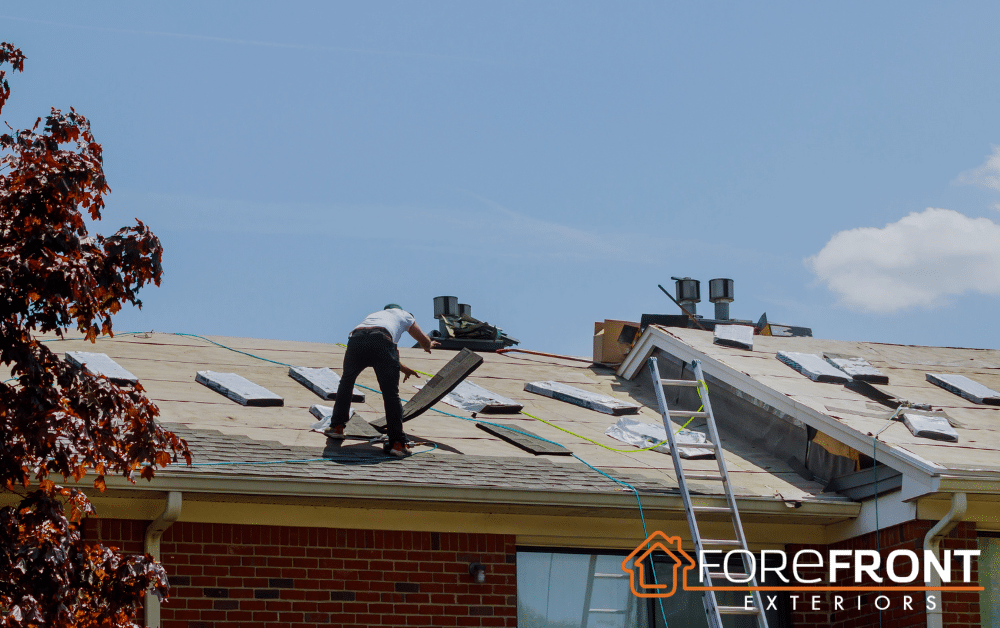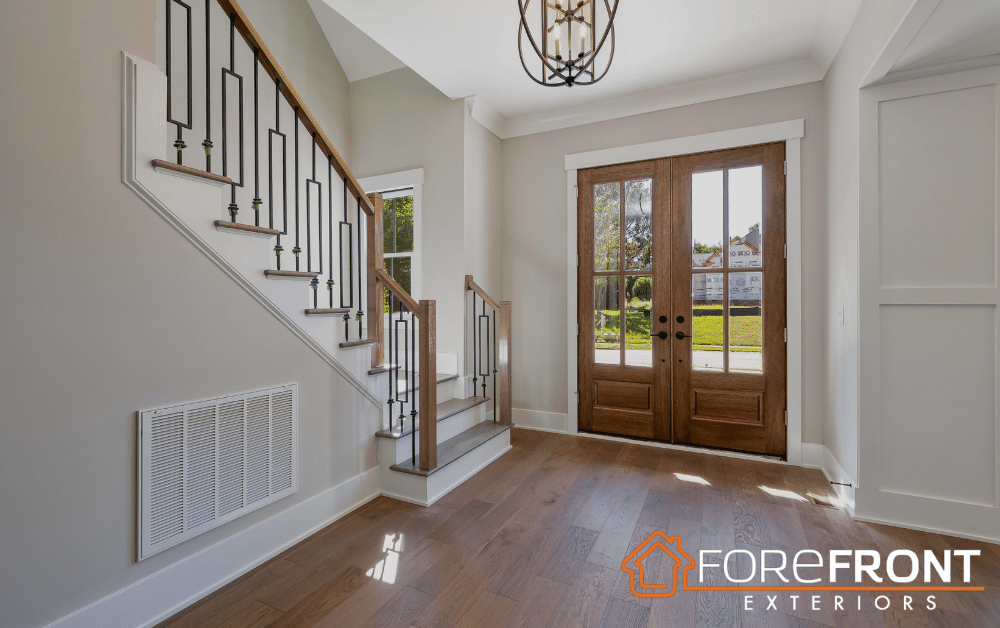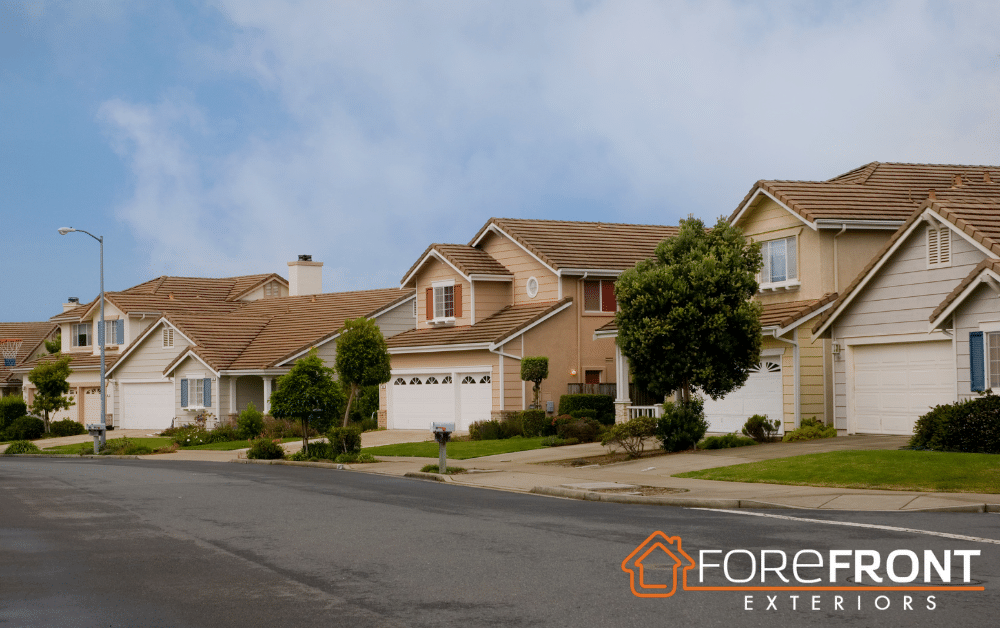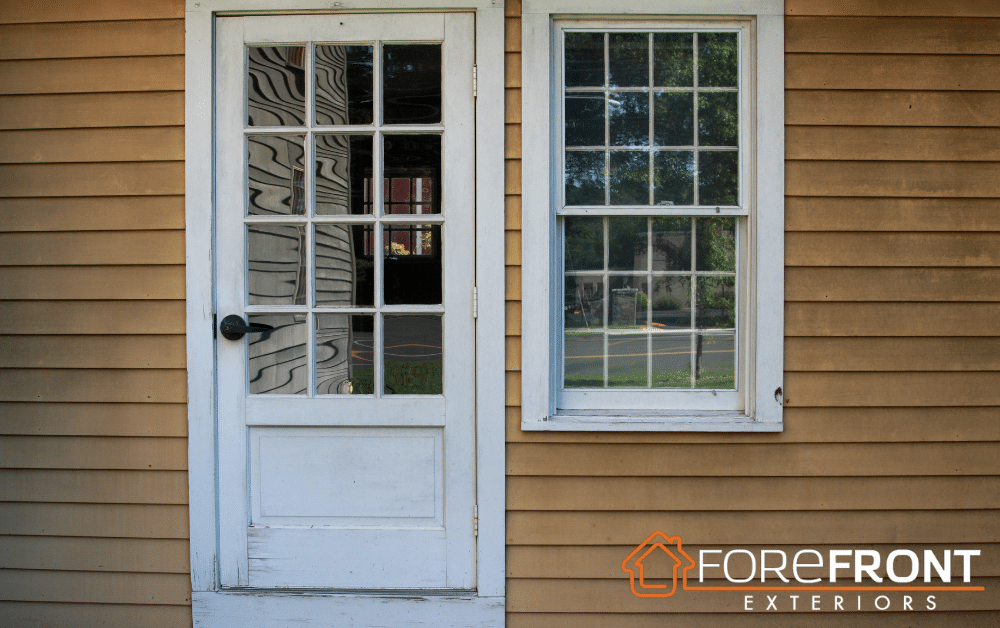An old door can seem harmless. It might open smoothly, match your home’s design, and feel sturdy enough. But beneath the surface, age takes its toll. Years of weather exposure, shifting frames, and outdated materials can quietly weaken your home’s first line of defense. In fact, many break-ins begin at the front door—a place most homeowners assume is secure.
If you haven’t inspected your door in a while, it might be time to ask: is your old door actually keeping you safe? At ForeFront Simple, we help homeowners identify these hidden risks and replace outdated doors with modern, secure solutions that protect what matters most.
Why an Old Door Can Compromise Your Home’s Safety
The Hidden Danger of Aging Doors
Even the best doors degrade over time. Wooden doors can swell, crack, or split, while metal doors rust or dent from years of use. As the frame shifts and hardware loosens, the door becomes easier to force open. What once felt strong may now give way under pressure—and intruders know it. Many homeowners don’t realize that even small imperfections can reduce structural integrity, allowing forced entry with surprisingly little effort.
The more your old door flexes, rattles, or sticks, the more likely it is that it’s weakened beyond repair. Regular wear and tear, along with years of environmental stress, cause screws to loosen and joints to separate. These small failures add up, leaving your entryway vulnerable at the points where strength matters most.
Outdated Materials Mean Outdated Security
An old door built decades ago likely wasn’t designed with modern security in mind. Hollow-core or thin wooden doors, once considered standard, are far less durable than today’s steel or fiberglass models. Modern door replacements feature reinforced cores, multi-point locks, and impact-resistant panels designed to withstand break-in attempts. Older materials simply can’t offer the same resistance or durability.
In addition to strength, new doors offer better insulation and soundproofing—an added benefit many homeowners overlook. A high-quality replacement can reduce noise, lower energy bills, and boost your home’s overall comfort while also improving safety. When compared side by side, an old door is no match for the construction quality of today’s secure designs.
Signs Your Old Door Is Putting You at Risk
Visible Damage or Warping
Cracks, dents, and gaps around the edges are more than cosmetic issues—they’re signs your door’s structure is failing. If your door sticks during humidity or leaves visible light around the frame, it may have warped over time. These openings not only reduce insulation but also create weak spots that intruders can exploit. Even if your door still closes properly, these small flaws indicate the material is no longer performing as it should.
Inspect your door closely for rot, rust, or water damage—especially near the bottom edges and around hardware. Once moisture seeps into an old door, the deterioration accelerates. When the frame begins to separate or the door feels spongy when pressed, replacement is the safest and most cost-effective solution.
Loose Hinges and Failing Frames
Even a solid door is only as strong as the frame holding it. Worn-out hinges, rusted screws, or rotting wood can make your old door easy to kick in. Reinforcing hinges with longer screws or replacing damaged frames can help temporarily, but if deterioration is widespread, a full replacement is the smarter move. A compromised frame weakens the door’s ability to absorb impact and hold its structure under stress.
Frames also shift with seasonal temperature changes, creating uneven pressure points that cause further loosening. Over time, this cycle leads to permanent misalignment. If your hinges creak or your door scrapes against the threshold, it’s a sign the frame has warped—and that your old door may no longer provide the protection you think it does.
Outdated Locks and Latches
Older locks are particularly vulnerable to lock-picking and bumping techniques. If your door still uses a single-bolt deadlock or basic latch, it may not offer real protection. Upgrading to a multi-point locking system or smart lock can drastically improve security and convenience. These systems secure the door at multiple points along the frame, making forced entry far more difficult.
Technology has transformed home security, and modern lock systems are designed to deter common intrusion methods. Smart locks allow for remote monitoring, temporary access codes, and integration with alarm systems—something your old door hardware likely can’t accommodate. Replacing outdated locks is a simple step that brings both peace of mind and practicality.
Decorative Glass Without Reinforcement
Many older doors feature beautiful glass inserts, but without modern reinforcement, they can become a break-in point. Tempered or laminated glass options prevent easy shattering, keeping your home secure while maintaining style. Glass designs today can still offer aesthetic appeal without sacrificing safety, combining elegance with durability.
If your old door’s glass is thin, single-pane, or unsecured, it’s time to upgrade. Reinforced glass, especially when paired with an impact-resistant frame, adds strength without compromising design. For homeowners who value natural light but not vulnerability, modern reinforced glass doors are the perfect solution.
How to Test If Your Old Door Is Still Secure
Perform the Push Test
Stand inside and gently push near the top, bottom, and middle of the door. Any flex or rattle suggests structural weakness. A strong door should feel firm with no visible movement. If you feel a shift or hear creaking, that’s a sign your hinges or frame are giving way under pressure.
Try repeating this test at different times of day or during various weather conditions. Wood expands and contracts with humidity, so what feels firm in the morning may feel looser by evening. Consistent movement indicates it’s time for a replacement—before a small weakness becomes a major issue.
Inspect Lock Alignment and Resistance
A lock that turns too loosely or struggles to align properly indicates wear in the strike plate or latch area. This often means the door or frame has shifted over time, weakening its seal and security. Misalignment not only compromises protection but also allows drafts and pests to enter your home.
If you notice that your deadbolt doesn’t fully extend or you need to lift or pull the door to lock it, the hardware may be wearing out. This is a clear warning that your old door’s alignment—and therefore its security—has been compromised. Replacing it will restore both functionality and peace of mind.
Get a Professional Inspection
If you’re unsure about your door’s condition, a professional inspection can identify weaknesses you might overlook. ForeFront Simple offers door assessments that evaluate both safety and energy efficiency, helping homeowners decide whether repair or replacement is the best route. Professionals have tools and expertise to detect hidden structural issues invisible to the naked eye.
A professional can also provide recommendations for new doors based on your home’s style, material preferences, and security needs. Investing in an expert opinion ensures you’re not only addressing current problems but also preventing future ones. A new, well-installed door is one of the most effective upgrades you can make for home protection.
When It’s Time to Replace Your Old Door
Repairs Can Only Go So Far
Replacing screws or tightening hinges can extend your door’s life temporarily, but if the core or frame is compromised, repairs won’t restore full security. Doors older than 15 years often fail to meet modern safety and insulation standards. Even minor gaps can make a home less energy-efficient and more vulnerable to intruders.
If you’ve repaired the same door multiple times, replacement is the cost-effective long-term choice. A new door restores performance, eliminates ongoing maintenance costs, and gives your home a refreshed look. More importantly, it restores the strength and stability that older doors gradually lose.
Benefits of a Modern Replacement Door
Today’s doors combine beauty, performance, and protection. A modern replacement offers:
- Reinforced steel or fiberglass construction
- Multi-point locking systems
- Energy-efficient insulation and weather sealing
- Smart lock compatibility
- Improved curb appeal and home value
Modern entry doors are built to resist the elements and withstand repeated use without loosening or warping. With better materials and engineering, they not only provide superior protection but also enhance your home’s comfort and appearance. ForeFront Simple installs high-quality replacement doors that not only look great but also give you peace of mind.
Conclusion
Your home’s security starts at the entryway. An old door may seem reliable, but small cracks, loose frames, and outdated hardware could be putting your family at risk. Don’t wait for a problem to reveal itself. Contact ForeFront Simple today for a professional consultation and explore replacement options that make your home safer, stronger, and more energy-efficient.






